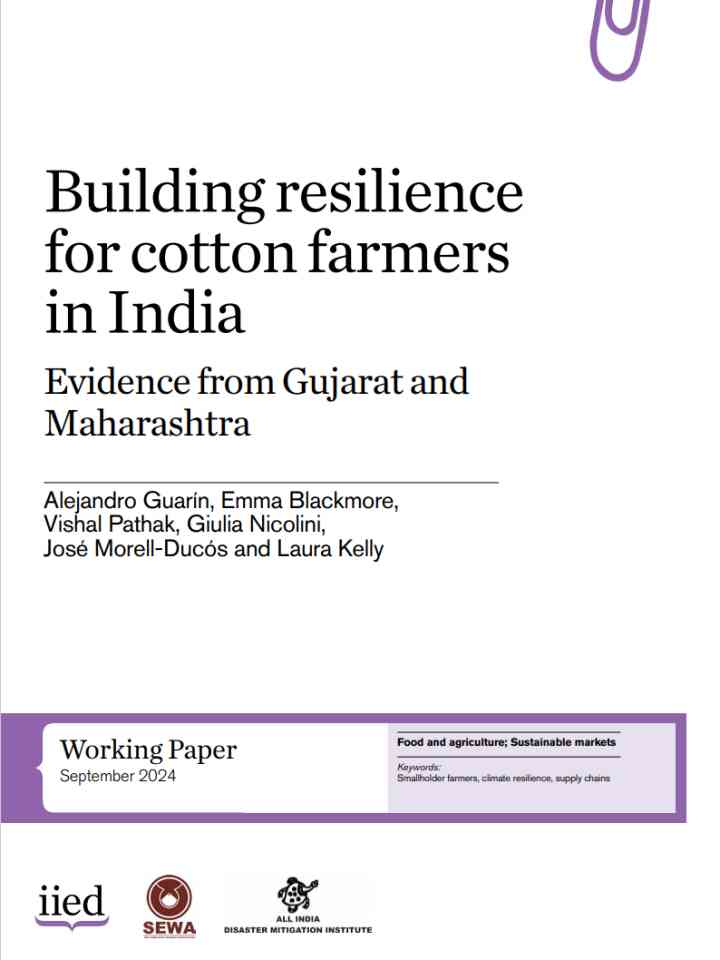Building resilience for cotton farmers in India: Evidence from Gujarat and Maharashtra
India, the world's largest cotton producer, faces growing threats from climate change, with smallholder farmers particularly vulnerable to extreme heat, erratic rainfall, and droughts. This study, drawing on data from Gujarat and Maharashtra, explores farmers' vulnerabilities, their responses to climate shocks, and the role of insurance. Livelihoods are diverse, combining farming, livestock, and outside employment, with income highest during harvest. While some specialize in cotton, most grow various crops. Coping strategies include savings, loans, and expense reduction, while mitigation involves crop rotation and intercropping. Insurance uptake remains low due to awareness and affordability issues, with complex claims processes. Women experience added household challenges, and the report offers recommendations to enhance resilience in the cotton sector.
Recommendations are as follow:
- Businesses, donors and farmer organisations should work to improve awareness among small-scale farmers of coping mechanisms, including insurance and government schemes.
- Stakeholders in the supply chain, including businesses, insurance and finance providers, and farmer organisations, must co-design new ideas for insurance products.
- Businesses, donors, governments and nongovernmental organisations should consider resilience building beyond insurance.
- Industry, advocacy groups and research institutions should think beyond the cotton sector and beyond India.
Explore further
